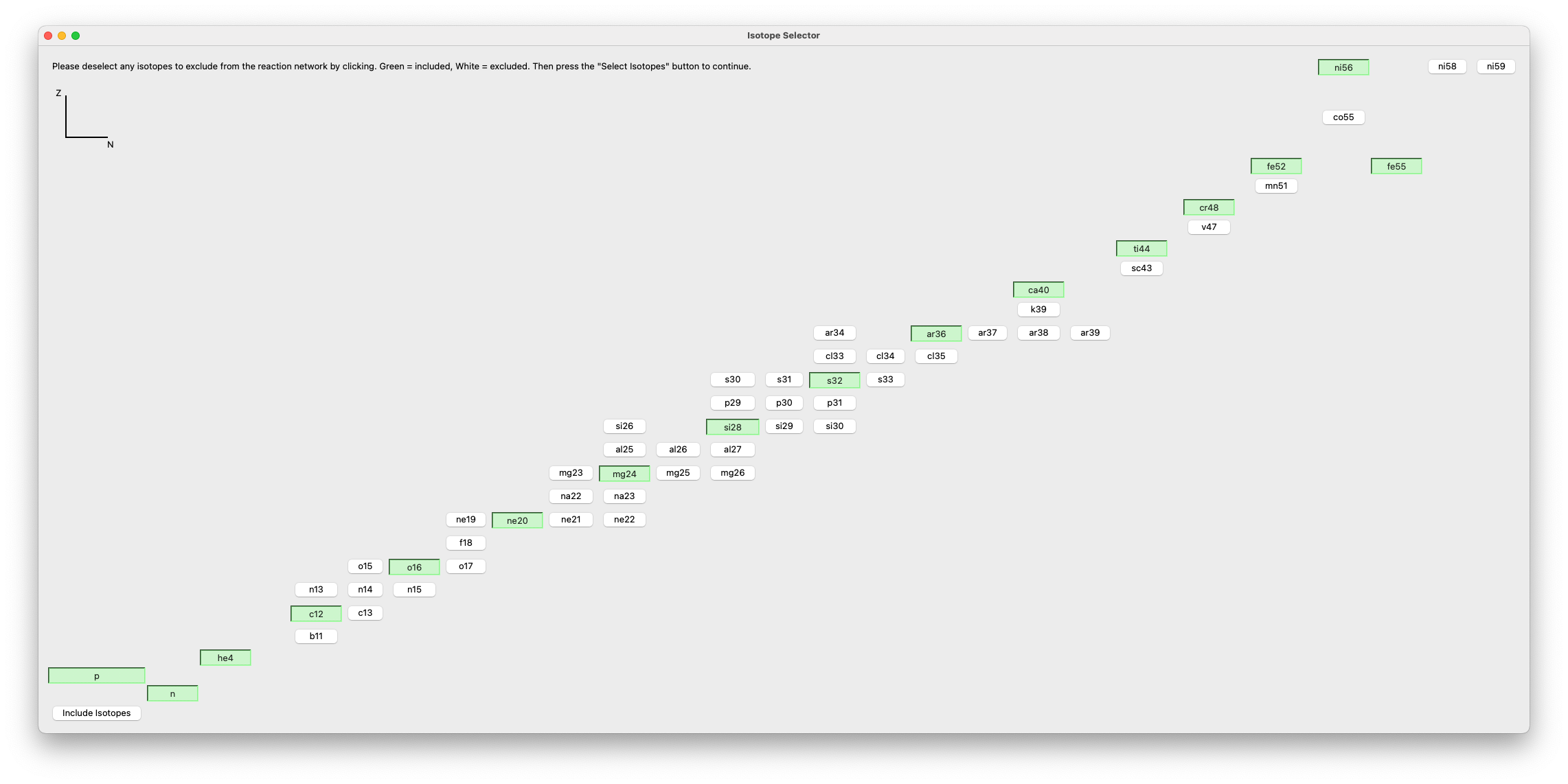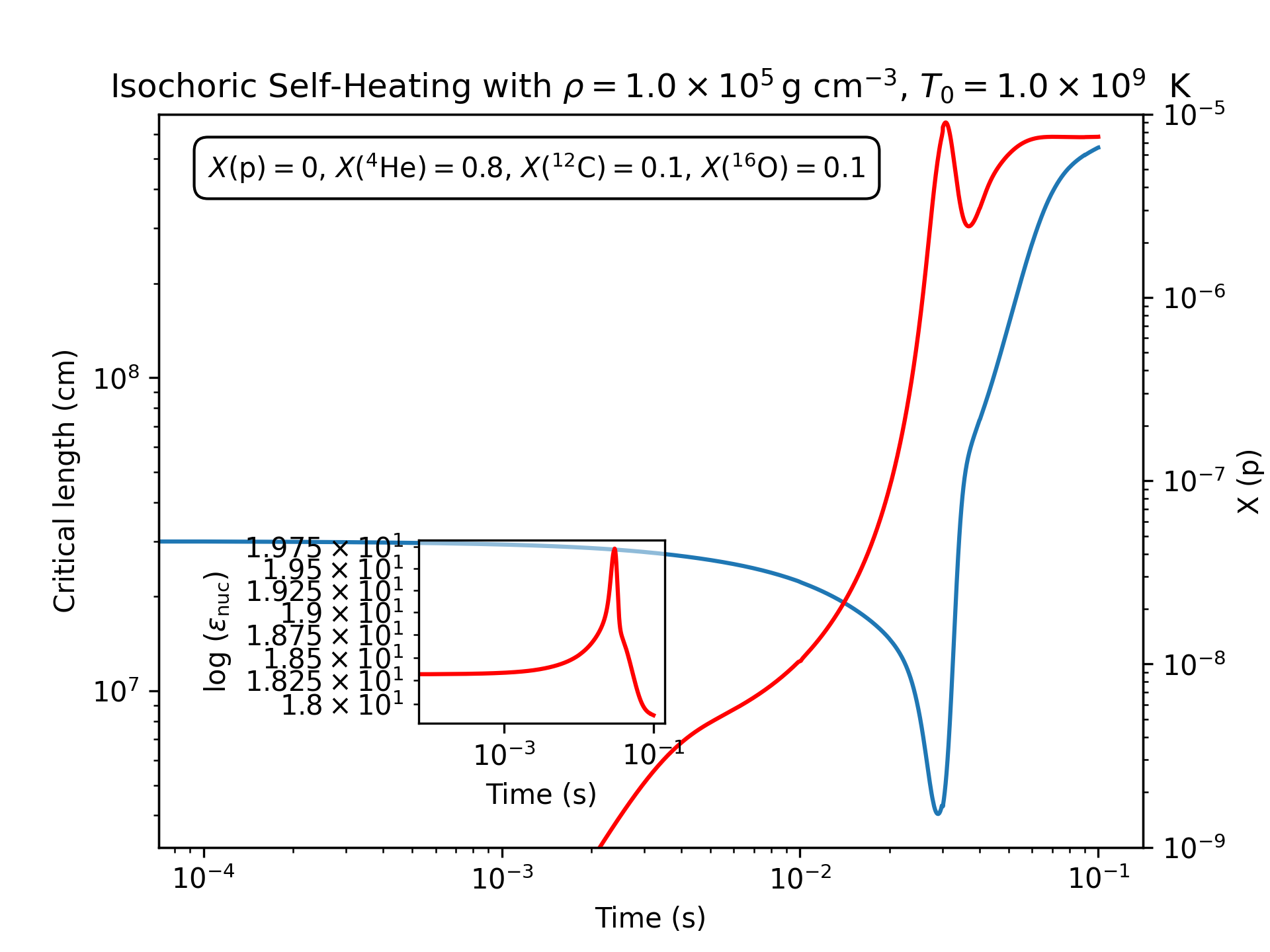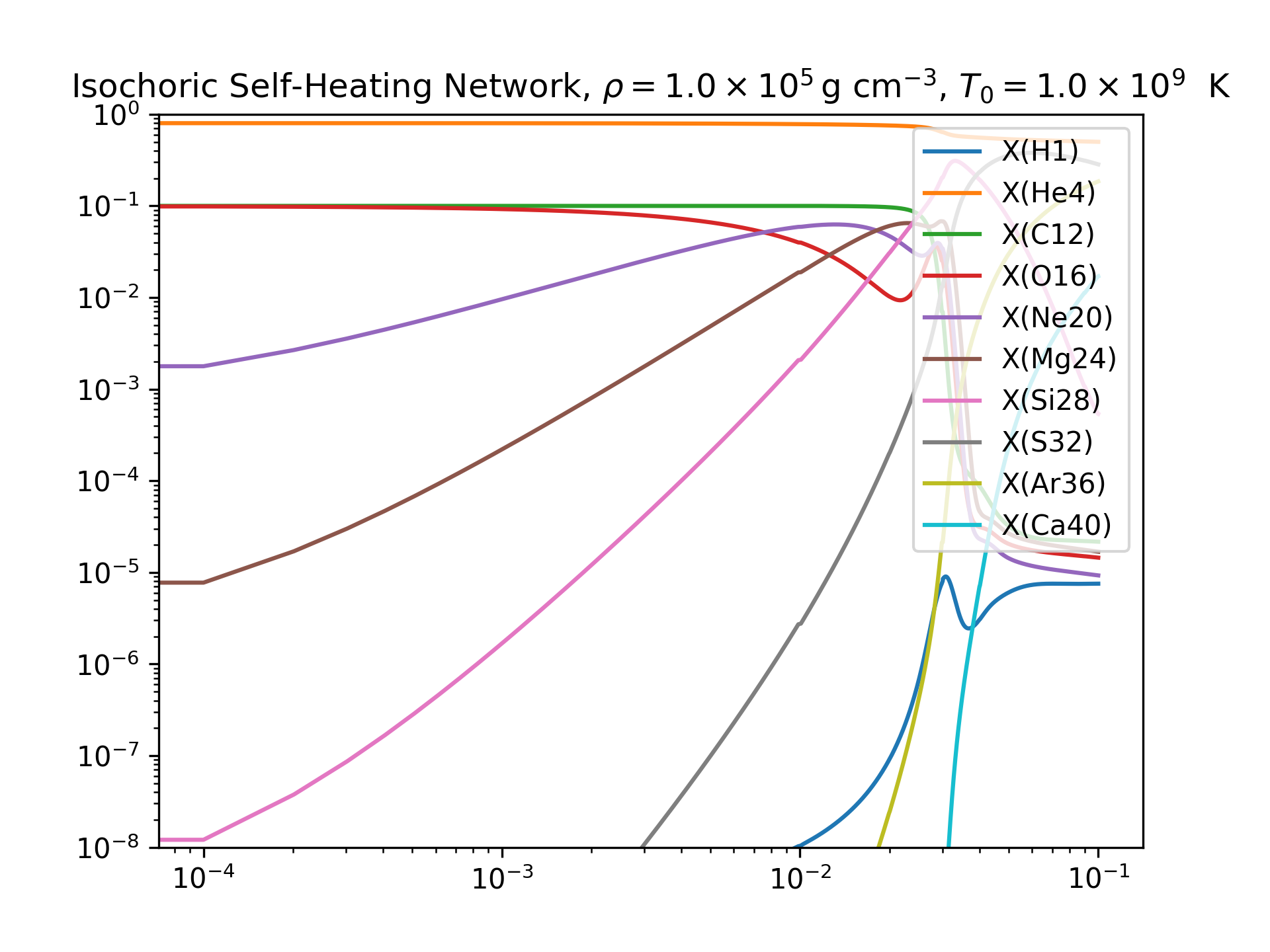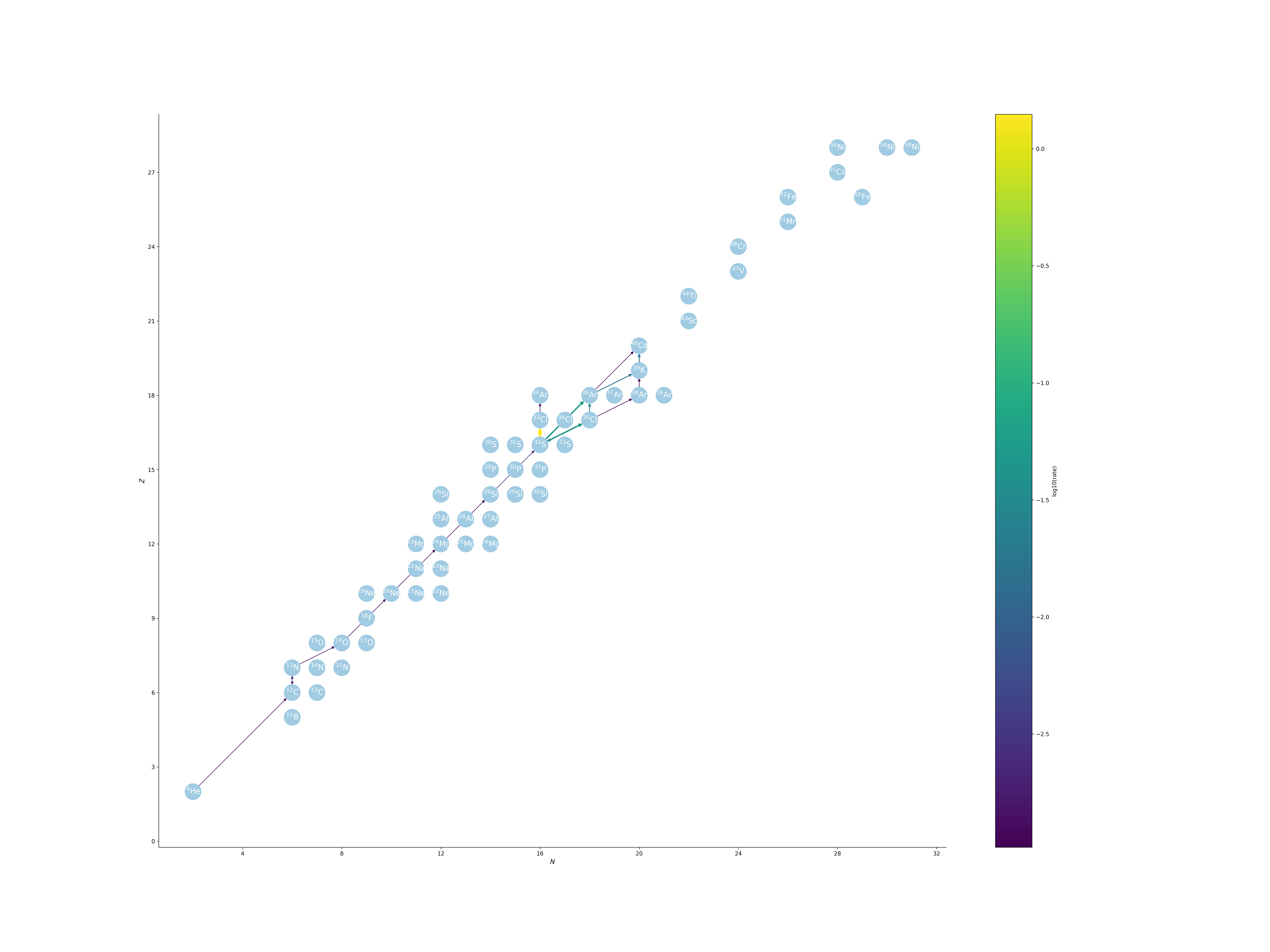PYNUCDET does a self-heating nuclear network calculation for either constant volume (isochoric) or constant pressure (isobaric) conditions using Mike Zingale's pynucastro for nuclear reaction rates and compositions, scipy.integrate for integration method, and Frank Timmes's Helmholtz equation of state for the speed of sound and specific heats. For isobaric conditions, a variation of the Helmholtz equation of state (EOS) adapted from Frank Timmes's Torch code is called as a function of pressure and temperature, mean mass number Abar, and mean atomic number Zbar, and returns density. The Helmholtz calls are handled by a custom Fortran wrapper around Helmholtz; the stdout from this wrapper contains the key EOS outputs, which are parsed by the function call_helmholtz in the aux.py module, using the Python subprocess module.
We furter compute the critical length for distributed nuclear burning using Poloudnenko, Gardiner, & Oran's 2011 PRL condition. The essential idea for this determination is to use the detonation initiation condition that the burning timescale is less than the sound-crossing time. When the burning timescale is less than the sound-crossing time across some region of size L, that region can no longer adjust its burning rate by increasing or decreasing its flame surface area subsonically. This runaway burning leads to the development of a shock front and a subsequent detonation.
Mathematically, this condition is equivalent to the statement t_burn < t_cross over some length scale L, so that the critical length L > (e_int / eps_nuc) c_s. Here e_int is the specific internal energy, eps_nuc is the specific nuclear energy generation rate, and c_s is the sound speed.
Optically-thin neutrino cooling is included from pynucastro, and an optional stub (not fully implemented) sets a prescribed turbulent dissipation rate.
The code includes a GUI to allow the user to easily select isotopes to be included in the network calculation.
Three sets of figures are produced: helium_abundances.png for abundances versus time, and detonation_lengths.png for detonation initiation length versus time, as well as a set of snapshots of reaction flows sampled at intervals in the network burn.
To use, one must first compile the Helmholtz Fortran code in the subdirectory _helmholtz, eg,
cd _helmholtz; make
The makefile defaults to the use of gfortran; to use another compiler, simply edit the FC
variable in the makefile.
Then to run the script, simply cd back to the top level and run
python3 self_heating.py
The command line options can be displayed by running
python3 self_heating.py --help
This outputs
usage: self_heat.py [-h] [--isobaric | --isochoric] [-rho RHO] [-T T]
[-xhe4 XHE4] [-xc12 XC12] [-xo16 XO16] [-tmax TMAX]
Nuclear reaction network script.
options:
-h, --help show this help message and exit
--isobaric Use isobaric conditions, with pressure set by initial density,
`temperature, and composition.`
--isochoric Use isochoric conditions established by initial density.
-rho RHO Initial mass density in g/cm^3.
-T T Initial temperature in Kelvin.
-xhe4 XHE4 Initial abundance of He4.
-xc12 XC12 Initial abundance of C12.
-xo16 XO16 Initial abundance of O16.
-tmax TMAX Simulation evolutionary time (in seconds).
PGO11: https://arxiv.org/abs/1106.3696
pynucastro: https://pynucastro.github.io/pynucastro/
Helmholtz: https://cococubed.com/code_pages/eos.shtml
Helmholtz Inversion from: https://cococubed.com/code_pages/burn.shtml
-rtf120523
Last update: rtf020924



